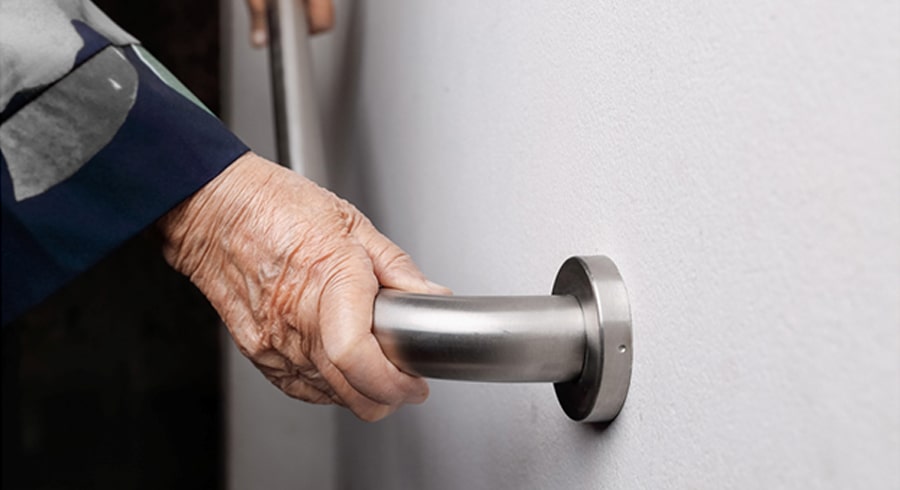Personal Care is Even More Important in a Post-Covid World

As the Covid pandemic begins to slowly ease its grip on our lives, many of us find ourselves somewhat circumspect about what lessons we have learned and which we will take with us into the future. For baby boomers and their families, the pandemic left behind an indelible reminder to value time together and the need to be prepared for the worst-case scenario. When shelter in place orders went into effect, many families found they needed to practice “social distancing” from the older family members most susceptible to the devastating impact of the virus, and many of them were ill-equipped to handle living on their own without assistance.
Kate Peterson found themselves in just this sort of situation. Prior to the pandemic hitting, she and her husband had been discussing moving her father into their spare room recently vacated by their eldest child who had moved out on his own.
“My father, David, was still in good health and reasonably good shape for a 72-year-old man, but his knees were starting to give him a lot of trouble,” said Kate. “His doctors wanted to wait a little longer before contemplating replacement surgery because they wanted to do one at a time and it would be a long process.”
David, a widower, lived alone in the two-story home in which Kate had grown up. With only one bathroom on the second floor, things like stairs, getting up and down from the commode, and maneuvering himself safely in and out of the shower were becoming increasingly difficult for him.
“We had just about convinced him to put the house on the market and move in with us when the pandemic hit,” says Kate. “Because we still had school-aged children living in our home and because I am a nurse, moving in with us during the pandemic would’ve put him at serious risk until it was over.”
Kate investigated getting her father both live-in and drop-in assistance, but the cost proved to be astronomical and somewhat more than what he needed. “He really just needed some assistance to make sure he could safely attend to his personal care needs while in the bathroom,” said Kate. “It was also very important for him to still feel he could be independent.”
As a nurse, Kate knew the best solution was equipping his bathroom and the rest of the house with support equipment that would provide him with the extra helping hand he would need to help him get up and down. “Once we installed those, it made all the difference,” said Kate. “It’s something we should have done a long time ago. It allows him to keep his independence and still give all of us a feeling of security during this unsure time.”
Being Prepared, Keeping Independence
The baby boomer generation continues to defy previously held stereotypes for what it looks like to age. Those born between the years of 1946-1964 have been proving that aging doesn’t haven’t to necessarily mean slowing down and have been staying active long past previous generations. 20% of people aged 65 or older are actively employed or looking for work, up from 12% two decades earlier, and the average age of independent living is now at 74, up seven years from two decades ago.
For those with parents and grandparents in this cohort, caring for their personal needs has meant a shift away from looking at retirement communities and nursing homes and instead been focused on how to assist them in maintaining an independent and safe quality of life for as long as possible. This means preparing their living situation with tools and equipment that can best help them continue to maneuver in their home in a safe but self-sufficient way for as long as possible.
Some of the most popular and useful equipment to meet those goals for independence are grab bars. Grab bars, when positioned in the right places, can be of tremendous assistance to those having difficulty with an incline or decline in their home, or getting up from a seated position or reclining into a sitting position.
Most household accidents, particularly “slip and fall” type incidents, occur when someone is getting in or out of the bathtub or shower. In fact, 80% of all household falls that effect the elderly happen in the bathroom, making it easily the most dangerous room in the home for the aging. According to the American Association of Retired People (AARP) installing grab bars in the shower and tub areas can reduce bathroom falls by as much as 30%. Installing these in the bathrooms in the home can therefore make a major difference in the quality of safety in the house and can also significantly extend the amount of time an elderly person can live independently in their home. Additionally, adhesive no-slip strips and bathmats in the shower and on the floor near the bathtub can provide some security and protection from slip and falls around the bathroom.
Personal care should be a vital and important part of everyone’s daily lives, particularly as we age. With some preventative planning and proper equipment, it’s possible for those who advancing in age or even those recovering from illness or injury to live a productive and self-sufficient life in their home for some time.
Recent Blogs
- Getting back to sport in a post covid-19 world
- LAERDAL® QCPR Training Manikins
- BVM Bags and Pocket CPR Masks
- Automatic External Defibrillators
- Preventing Donning & Doffing Self-Contamination
- Disinfectants Vereburn Content Set
- Making Health Habitual: The Psychology of Using Hand Sanitizer
- Face Shields Have Been Recommended for Years Before COVID
- Research Indicates that a Majority of Canadians Say Wearing a Mask
- Your Emergency Medical Kit: The Importance of Design and Contents
 SPECIAL PRICING AVAILABLE FOR HEALTHCARE PROFESSIONALS.
Please log in or create an account to receive pricing and access additional site features.
SPECIAL PRICING AVAILABLE FOR HEALTHCARE PROFESSIONALS.
Please log in or create an account to receive pricing and access additional site features.